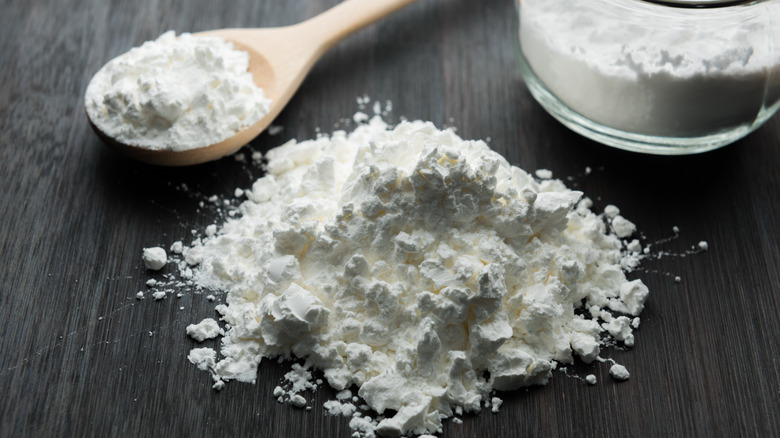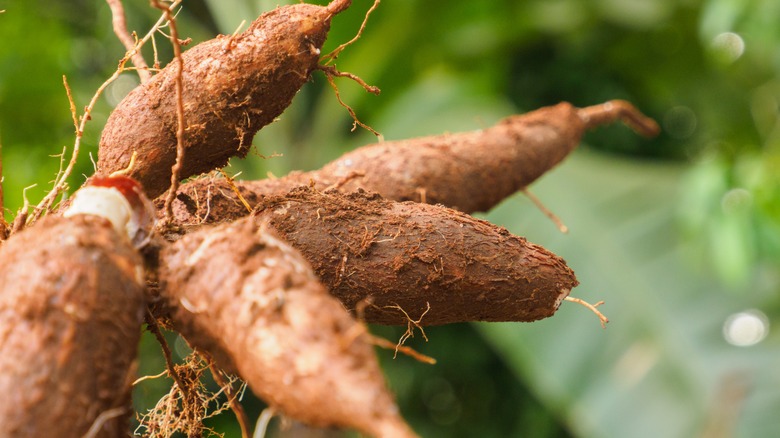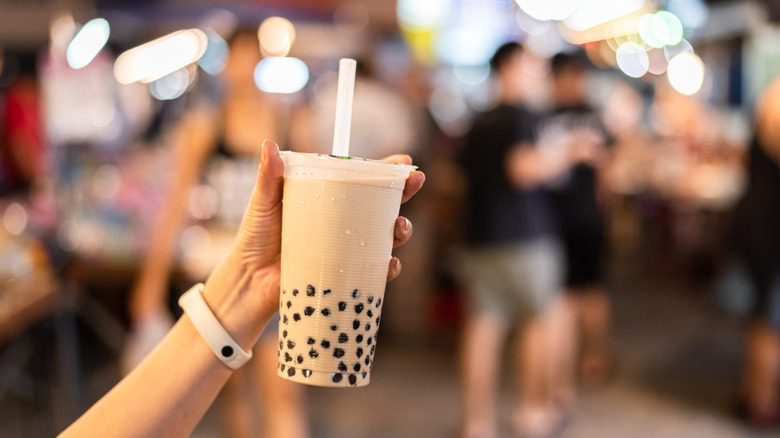What Is Tapioca Made Of?
For those that follow a gluten-free diet, are sensitive to gluten, or want to avoid it for whatever reason — there are a plethora of wheat alternatives to choose from these days. It's easier today than ever to make substitutions and find easy-enough options in line with any dietary restrictions, so we can still enjoy some of our favorite foods.
You can replace wheat flour with rice flour or potato starch. You can replace pasta with a chickpea or lentil variation. You can replace pizza dough with cauliflower crust and conventional wheat bread with a gluten-free sprouted grain. Another popular gluten-free alternative to using would-be wheat products is tapioca, via Eating With Food Allergies.
Do you know those fun pearls that float around at the bottom of your boba tea? That's tapioca. We've seen tapioca flour or tapioca starch in the ingredient list on certain gluten-free products. And we've all heard of tapioca pudding. But what exactly is tapioca?
Tapioca comes from cassava root
According to Healthline, tapioca is the starch itself that comes from cassava root — usually produced in the form of flour, pearls, or flakes for various cooking purposes. Cassava root is a high-calorie, carbohydrate-rich root vegetable, or a "tuber crop", that grows underground. Think of it as a sweet potato, but longer and with a skin that's almost like bark. It's a good source of nutrients and energy, and as long as it's prepared safely to rid the crop of any toxicity, it's a healthy addition to our diet, per Healthline.
But tapioca isn't to be confused with cassava flour — it's not simply ground-up cassava, but rather it's the starchy liquid that's extracted from the root. Healthline explains that once the liquid is removed and the water evaporates, it leaves behind a fine tapioca powder, which is essentially entirely starch. From there, the tapioca powder can be formed into flakes or pearls.
Tapioca is a grain-free, gluten-free substance with a neutral taste, so it's often used as either a substitute for wheat in bread, an ingredient in snacks and desserts, or as a thickener or binding agent in things like soups, gravies, and even burgers, via Healthline.
Is tapioca good for you?
There may be plenty of options to choose from, but not all wheat alternatives are created equal in terms of nutrition. While cassava is nutritious and generally believed to be beneficial for your health, per Clean Eating Kitchen, tapioca is one of those products that are not necessarily bad for you, but not necessarily good for you either.
Because it's pretty much made up of pure carbs, tapioca is somewhat of an "empty calorie" food — 544 calories per cup, according to Healthline. With almost no fat, protein, or fiber left behind, there aren't really any nutrients to benefit from once that cassava root is turned into tapioca.
So if you want a wheat alternative that's also nutritious or beneficial, you may be better off going with something like coconut, quinoa, or almond flour. But if you're looking for an unflavored gluten-free alternative to cook, bake, or thicken your food with, tapioca gets the job done nicely.


